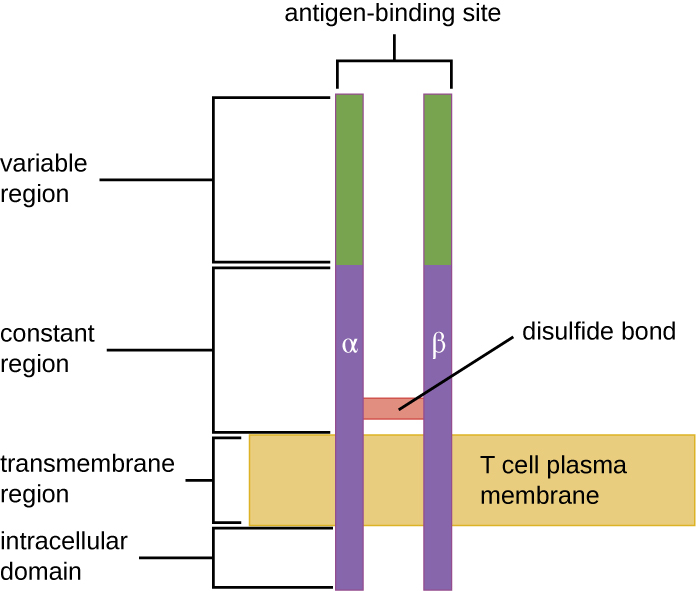| << Chapter < Page | Chapter >> Page > |
TCRs are epitope-specific, and it has been estimated that 25 million T cells with unique epitope-binding TCRs are required to protect an individual against a wide range of microbial pathogens. Because the human genome only contains about 25,000 genes, we know that each specific TCR cannot be encoded by its own set of genes. This raises the question of how such a vast population of T cells with millions of specific TCRs can be achieved. The answer is a process called genetic rearrangement , which occurs in the thymus during the first step of thymic selection .
The genes that code for the variable regions of the TCR are divided into distinct gene segments called variable (V), diversity (D), and joining (J) segments . The genes segments associated with the α chain of the TCR consist 70 or more different V α segments and 61 different J α segments. The gene segments associated with the β chain of the TCR consist of 52 different V β segments, two different D β segments, and 13 different J β segments. During the development of the functional TCR in the thymus, genetic rearrangement in a T cell brings together one V α segment and one J α segment to code for the variable region of the α chain. Similarly, genetic rearrangement brings one of the V β segments together with one of the D β segments and one of thetJ β segments to code for the variable region of the β chain. All the possible combinations of rearrangements between different segments of V, D, and J provide the genetic diversity required to produce millions of TCRs with unique epitope-specific variable regions.

Helper T cells can only be activated by APCs presenting processed foreign epitopes in association with MHC II . The first step in the activation process is TCR recognition of the specific foreign epitope presented within the MHC II antigen-binding cleft . The second step involves the interaction of CD4 on the helper T cell with a region of the MHC II molecule separate from the antigen-binding cleft. This second interaction anchors the MHC II-TCR complex and ensures that the helper T cell is recognizing both the foreign (“nonself”) epitope and “self” antigen of the APC; both recognitions are required for activation of the cell. In the third step, the APC and T cell secrete cytokines that activate the helper T cell. The activated helper T cell then proliferates, dividing by mitosis to produce clonal naïve helper T cells that differentiate into subtypes with different functions ( [link] ).


Notification Switch
Would you like to follow the 'Microbiology' conversation and receive update notifications?